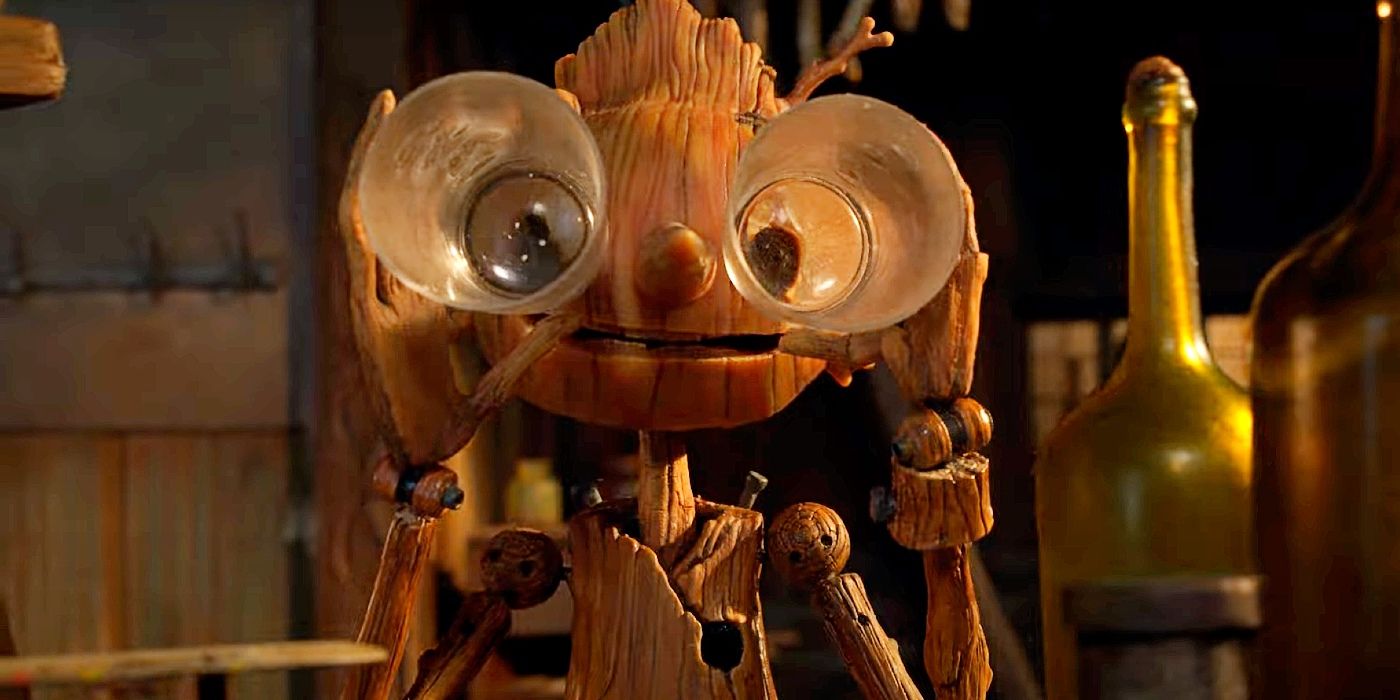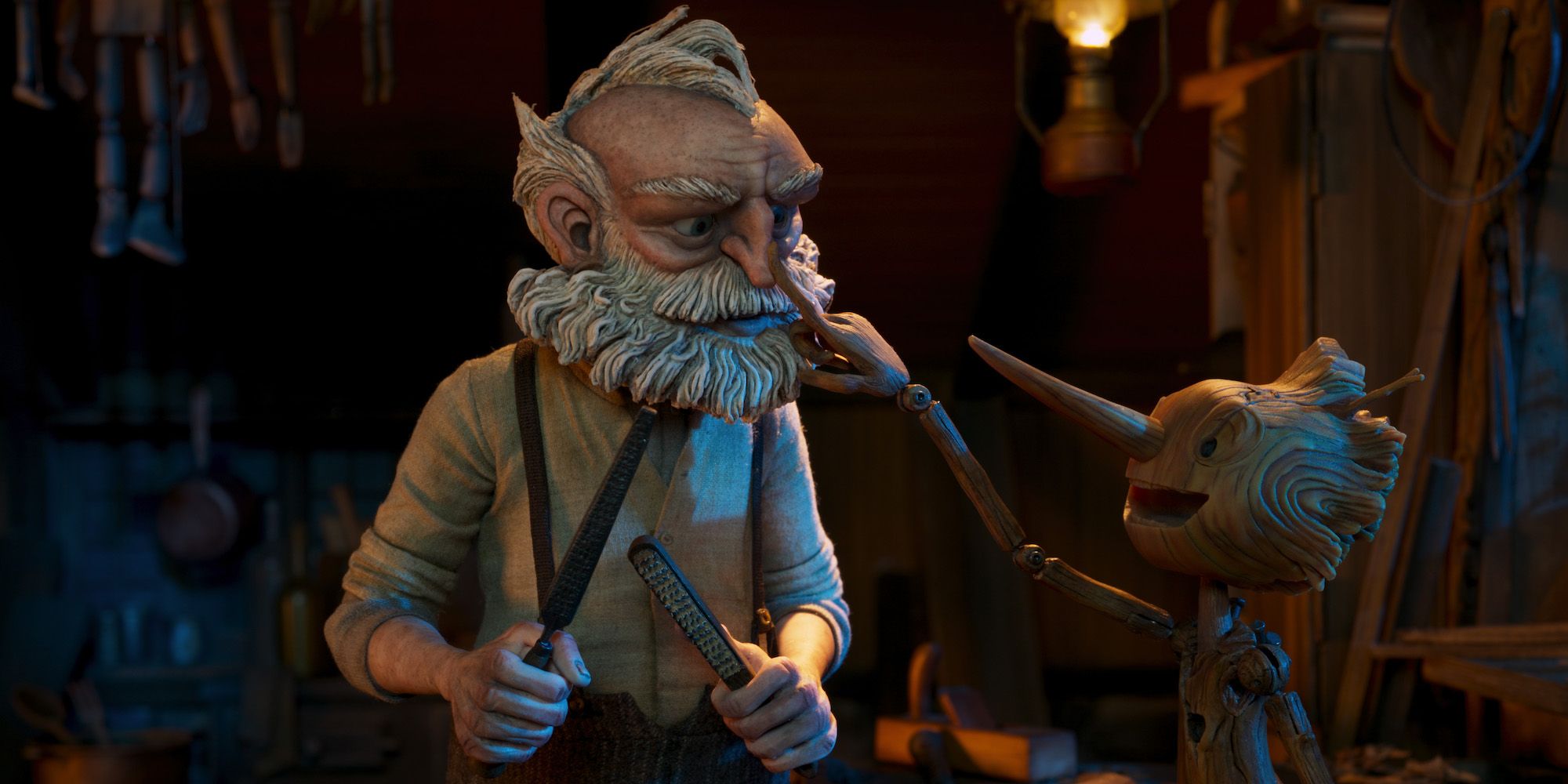The handcrafted, stop-motion animation of Guillermo del Toro's Pinocchio takes center stage in a new behind-the-scenes featurette. Based on the 1883 children's book, The Adventures of Pinocchio, del Toro's new movie is the latest in a long line of adaptations, with Disney's 1940 animated film being the most well-known. Del Toro's adaptation features voice performances from Gregory Mann, Ewan McGregor, Finn Wolfhard, Ron Perlman, David Bradley, Tilda Swinton, and Cate Blanchett, and had a limited theatrical run before its release on Netflix. Guillermo del Toro's Pinocchio has already earned very strong reviews from critics and audiences, with particular praise directed at the movie's beautiful animation style.
After Disney's live-action Pinocchio flopped with fans and critics alike this past fall, a new behind-the-scenes featurette shared by Netflix shows del Toro's drastically different approach to the source material. The new video pulls back the curtain on the painstaking artistry that went into bringing Guillermo del Toro's Pinocchio to life in stop-motion, which included building highly detailed puppets, sets, and props by hand. Check out the new featurette below:
Why Guillermo Del Toro Is The Perfect Director For A Stop-Motion Pinocchio
Before he adapted Pinocchio, del Toro made his name in Hollywood and earned a passionate fanbase for directing films like Hellboy, Pan's Labyrinth, and Hellboy II: The Golden Army, all of which featured a unique visual style. He would go on to direct Oscar-winning films like The Shape of Water and Nightmare Alley, once again showcasing an eye for a specific kind of nightmarish, gothic magical realism. Del Toro's films also often involve mystical creatures of some sort, many of which boast visual designs that look like they've been pulled directly from a dark fairy tale. This penchant for finding beauty in darkly fantastical worlds makes the director a perfect fit for Pinocchio.
On the surface, Pinocchio seems like a relatively straightforward children's tale about a wooden boy who comes to life. Underneath this high-concept premise, however, is a tragic, human tale about loneliness, loss, and fitting in, which del Toro explores using an animation style not often seen in films anymore. Due to the work hours and level of human artistry involved in creating a feature-length stop-motion movie like Guillermo del Toro's Pinocchio, the method is no longer as widely used as it once was.
The director's ability to marry dark and tragic themes with a unique visual style ultimately ends up elevating a story that, as Disney's live-action retelling makes clear, can be totally misconstrued in the wrong hands. The timeless story of Pinocchio is likely one that will continue to be adapted in the decades to come, but del Toro's artistic sensibilities make his vision for the source material particularly engaging, and hopefully one that stands the test of time. While he continues to impress with live-action movies from Hellboy to Nightmare Alley, Guillermo del Toro's Pinocchio makes a strong case that the director should continue to work in stop-motion animation to bring certain stories to life.
Source: Netflix


